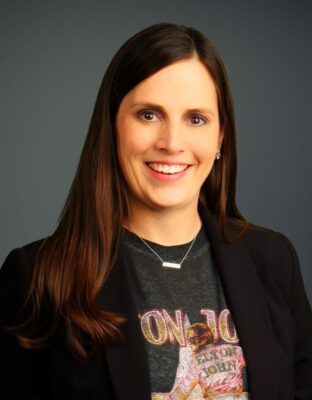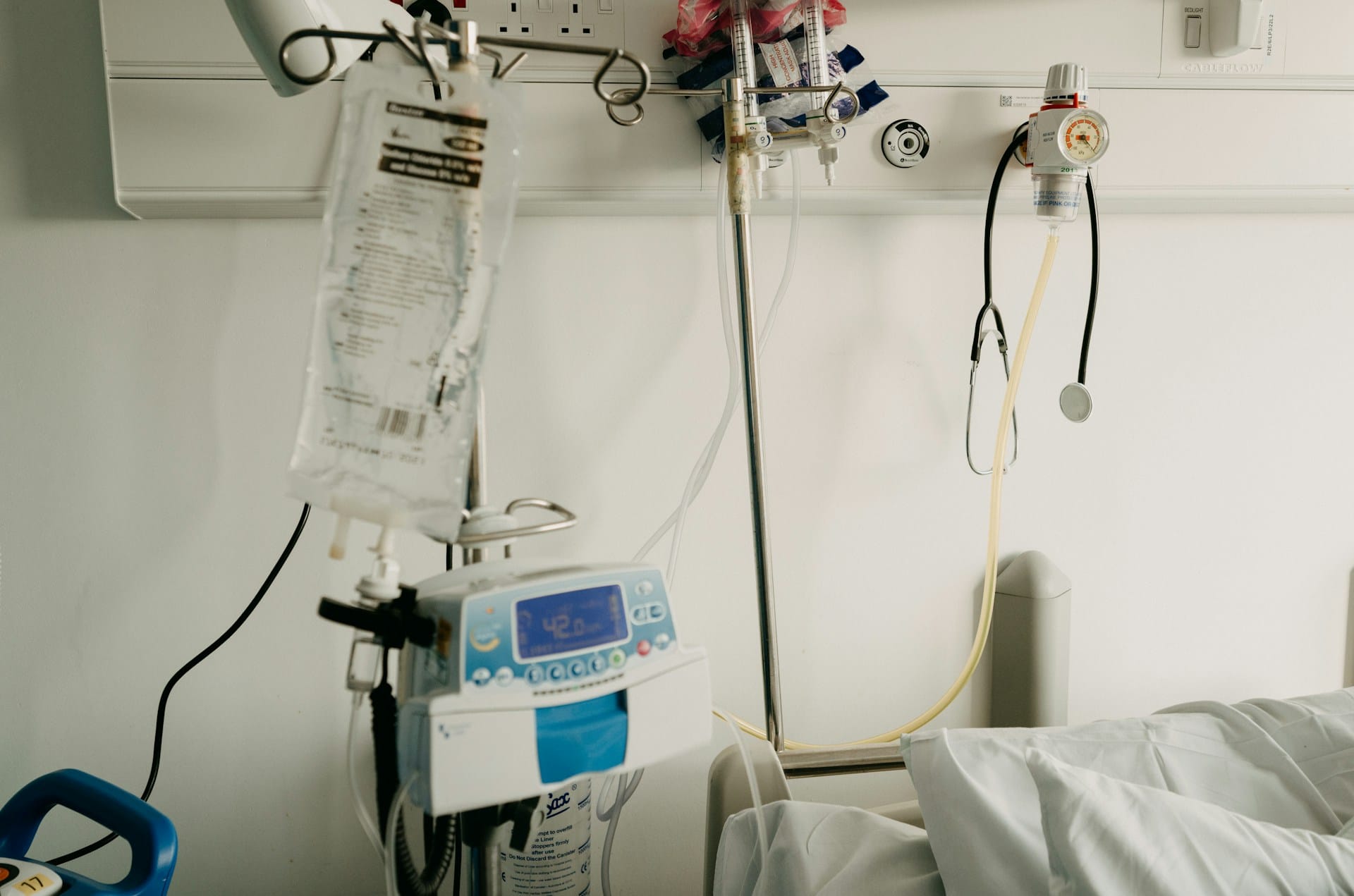Beating AE Gradually, Then Suddenly
Jackie recounts her dramatic shift from a thriving lawyer to a patient grappling with autoimmune encephalitis (AE), a rare brain illness. This powerful narrative reveals how trauma can be invisible, emphasizing resilience, the importance of support, and the hope of better days ahead.

Story
In my experience, there’s not always a “look” to trauma. A bald head or tiny wisps of short hair on a woman can mean cancer. A man’s thinning legs in the seat of a wheelchair can mean paralysis or MS. A woman who walks timidly into the courtroom while failing to make eye contact and fidgeting with her shaking hands can mean she’s the victim of domestic abuse.
 Others can also look every bit the professional people they’re known to be. A woman can dress smart, command a room, and speak with confidence. She can relish the days she litigated cases and swam early morning laps in a pool. She can convincingly pivot from her role as a lawyer to the role of an author and speaker as if it was her own choice. And through it all, she can show no real outward signs of distress or defect.
Others can also look every bit the professional people they’re known to be. A woman can dress smart, command a room, and speak with confidence. She can relish the days she litigated cases and swam early morning laps in a pool. She can convincingly pivot from her role as a lawyer to the role of an author and speaker as if it was her own choice. And through it all, she can show no real outward signs of distress or defect.
But in my experience, that woman can also be the victim of trauma. And I know that, because it’s my experience.
In 2018, I was a hustling and notable thirty-four-year-old senior partner of my own law firm. My husband stayed home with our then-five- and three-year-old children. I had chased my longtime dream of being the fierce lawyer John Grisham wrote books about, and believed I controlled my destiny. But in May that same year, my life was forever and traumatically altered when I was diagnosed with autoimmune encephalitis (AE), a rare and devastating illness wherein my immune system attacked my brain, causing inflammation.
To use Hemmingway’s words, AE happened to me in two ways: gradually, then suddenly.
I became a prisoner of my mind and body.
What started in late 2017 as interrupted sleep and anxiety, a few months later morphed into insomnia, which then turned into shaking hands, white noise in my ears, a clenched jaw, and the eerie feeling that I was an empty shell of my former self. Upon leaving my law firm for a “week’s break” on Tuesday, May 8, 2018, I became uncommunicative, paranoid, and hallucinatory.
I mustered the energy to beg my family to commit me to the psychiatric ward because I believed I was having a psychiatric breakdown, precipitated by work burnout. I was committed for forty-eight hours, and while there, I lost the ability to write and tell time, and I got lost in the ward’s circular hallway. I was also misdiagnosed with anxiety, depression, and a panic disorder. My brain was breaking and so was the connection between my mind and my illness. I became a prisoner of my mind and body. I was left powerless, and yet, my family supported me in my dire but unknown situation and never gave up on me.
A week after my discharge, my husband held me up as I walked into a follow-up psychiatric appointment. My thoughts were scattered, and I pleaded for someone to stop my pain. The nurse practitioner recognized my neurological symptoms and expedited my referral to the person who could help me: a neurologist.
 But by that time, I was a runaway train. And I began having seizures.
But by that time, I was a runaway train. And I began having seizures.
During the days-long clinical workup for suspected AE, I had a grand mal seizure (also known as a tonic-clonic seizure) in my bed at home. Four firemen and two EMTs rescued me from my own bedroom and transported me to the hospital, where my family learned the seizure had broken and dislocated my shoulder and fractured my back in three places. The entire illness, almost seven months in the making, completely unfolded in the wee morning hours of May 26th when that seizure tore through my brain and body.
Unbeknownst to me, life had already dramatically changed when I left my law firm on May 8th, because I would never again return to the office or to my career. And upon my seizure and diagnosis a few weeks later, the only life I knew – a life where I had never even heard of AE – was irreversibly altered.
I cried constant tears and grieved the life I lost and the poor quality of life I feared in my future.
After high doses of intravenous steroids and my brain miraculously turning on again, I began to learn about my illness and its destruction. I had to come to grips with the fact that my life and health were rendered fragile…and that I had lost my mind in front of my young children. Everything about the experience was painful, overwhelming, terrifying, and devastating. Still, the godsend of my brain’s return was almost no match for my illness’s heartbreak. I was left with scars I didn’t believe could ever heal.
Deep within me, I knew that healing would take patience and quiet, and for a while, it felt like the world was going to go on without me. I also knew that it would take time and that I could not just force myself back to being well. For the first year of recovery, I rested, isolated from the world, and spent time sitting with the pain through prayer and journaling. I focused on slowly building physical strength through walking and a stationary bike, and cautiously exercised my mind through reading. I took large doses of steroids for my AE, which gave me highs, insomnia, and dramatically changed my appearance. I took anti-seizure medication that slowed my thinking. I needed medication for sleep, for depression and anxiety, and to counter the effects of other prescribed medication. Needless to say, I made numerous trips to the Mayo Clinic as a very sick woman.
 I walked away from my law firm and retired from practice. I cried constant tears and grieved the life I lost and the poor quality of life I feared in my future. My family and community recognized my devastation and rallied around me. Many told me to “just keep swimming.” They said it, and I repeated it. Eventually, I started to believe it. If I kept going, every day, no matter what life threw at me, I could do it. I could return to being me.
I walked away from my law firm and retired from practice. I cried constant tears and grieved the life I lost and the poor quality of life I feared in my future. My family and community recognized my devastation and rallied around me. Many told me to “just keep swimming.” They said it, and I repeated it. Eventually, I started to believe it. If I kept going, every day, no matter what life threw at me, I could do it. I could return to being me.
Over the next few years, I made gains both small and large when I began to get out of the house, drive, travel alone, chaperone elementary school field trips, and attend local bar luncheons. I even started writing a memoir. And in a surprise of all surprises, I gave birth to a healthy, happy, baby girl in the early days of the pandemic. She was a beacon of hope in my otherwise tragic story.
After doing all I could in the name of wellness for two years and despite my progress, I still felt stuck. So I finally entered counseling with a psychologist. The dedication and hard work I put into improving my mental health since then has aided me in healing more than I ever could have imagined. As I look back, especially in the early days, the love of my family and my writing saved me. And it was counseling that helped me find the necessary skills to close the chapter on surviving AE and to reclaim my voice and agency.
Over time – gradually, then suddenly – I not only began to once again recognize the woman in the mirror, but I also became proud of her.
Over time – gradually, then suddenly – I not only began to once again recognize the woman in the mirror, but I also became proud of her. I’m now the author of my memoir, Unwillable: A Journey to Reclaim My Brain and the JM Stebbins blog. I’m also the host of the global Brain Fever podcast, and I give motivational speeches about resilience.
Surviving and recovering from AE – all while grieving the loss of my career, identity, and agency, as well as trying to rebuild my life – was an enormous undertaking, one that many times I thought was impossible. And while I cannot say for certain that I’ve made a “full recovery” from my illness and all the collateral damage it caused, I believe I’ve done a damn fine job of resurrecting myself from its darkness. In my opinion, its trauma will never disappear; but through medication, exercise, fresh air, counseling, and love, I’ve learned to cope with its remnants.
While I was trapped in my mind and in the psychiatric ward, I managed to scrawl “better days ahead,” in a journal. Even as I was on the brink of death, I believed in the power of those words, and I wholeheartedly embraced their energy in my weakest days of recovery.
While my traumatic experience just happens to be AE, I know that I’m not alone in wading through some of life’s most profound hurt and misery. Unfortunately, suffering is all too common for humankind. What I offer to others from my journey is the reminder to “just keep swimming,” coupled with the promise of “better days ahead.” But perhaps most importantly, I also want to remind people of the importance of showing up for others, because as my experience shows, there’s not always a “look” to trauma.
About the contributor
Jackie M. Stebbins, Esq., is an author, podcaster, and motivational speaker who shares her traumatic experience with autoimmune encephalitis (AE) and resilience for life’s interruptions. She resides in Bismarck, ND with her beloved husband and three kids.